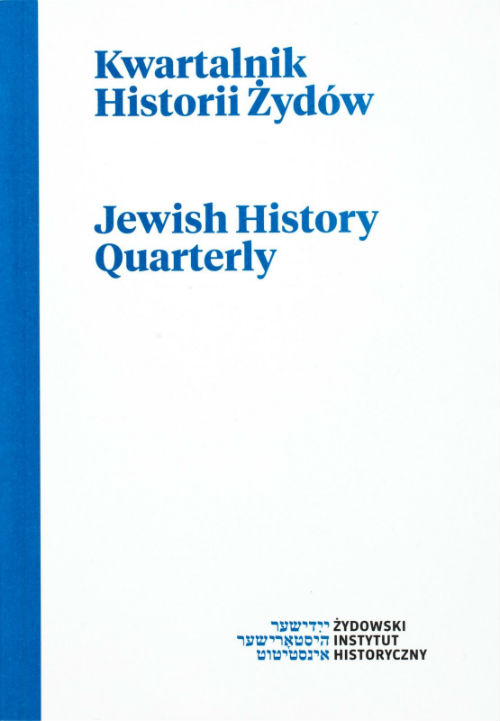Raum und Symbol. Das Jüdische Viertel in der frühen Neuzeit als “Ghetto” in den Werken Majer Bałabans
Space Versus Symbol. Presentation of the Jewish Quarter in Modern Times as a ‘Ghetto’ in the Works of Majer Bałaban
Author(s): Jürgen HeydeSubject(s): History
Published by: Żydowski Instytut Historyczny
Keywords: Majer Bałaban; ghetto; Jewish historiography
Summary/Abstract: The article examines Majer Bałaban’s views of history, formulated in his works. The focal point of the analysis is the presentation of Jewish quarters in early Modern Times in Bałaban’s monographs dealing with local history. Using as an example his monographs and articles about Kraków, Lviv and Lublin, it presents a general outline of the notion of the „ghetto”. Next to the ghetto in the physical sense, i.e., the walls erected by the non-Jewish society to isolate the Jews from their Christian environment, Bałaban insisted that it was also necessary to identify the „moral ghetto”, characterized by intellectual isolation and no participation in the advances of science. For him the „ghetto” was a phenomenon of the modern times, which was only fully overcome by the full emancipation of Galician Jews in 1868. However, the “ghetto” was at the same time a metaphysical space, in which, in a sense, time stopped to run, meaning that even after eliminating the “:physical ghetto”, the “moral ghetto” could linger on in the minds of individual people, who were reluctant to acknowledge the change.
Journal: Kwartalnik Historii Żydów
- Issue Year: 240/2011
- Issue No: 04
- Page Range: 445-461
- Page Count: 17
- Language: German

